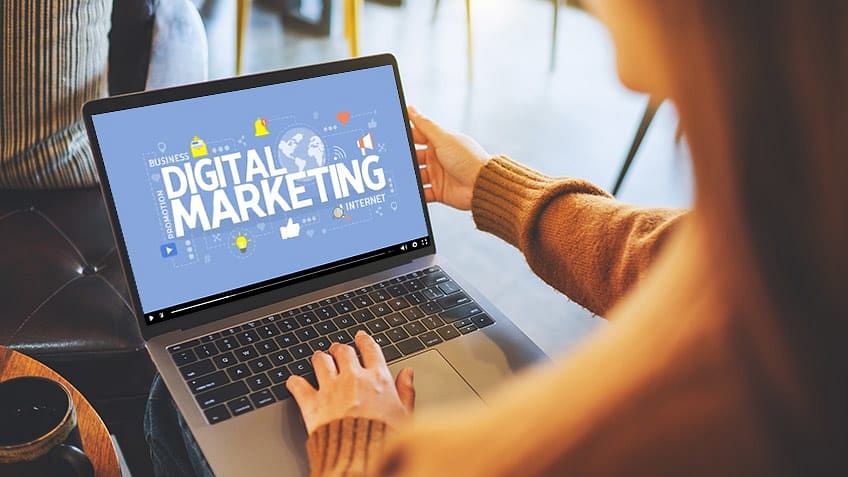Enhance Individual Experience and Drive Website Traffic With Receptive Internet Layout
In today's digital landscape, where customers are accessing sites from a multitude of gadgets, responsive website design has come to be more crucial than ever. With its capability to adjust and flawlessly adapt to various screen sizes, responsive design not just improves individual experience however also drives traffic to your website. Why is this layout strategy so important? Exactly how does it increase customer interaction and increase site web traffic? In this conversation, we will check out the vital components of reliable receptive style, explore the very best practices for its execution, and uncover the secrets to boosting user experience while driving even more web traffic to your site.
Why Responsive Web Style Matters
Responsive web layout is a necessary aspect of modern-day internet growth because of its ability to make sure ideal individual experience across various gadgets and display sizes. With the spreading of smart devices, tablets, and other smart phones, it has actually ended up being important for sites to adjust and give smooth functionality no matter the device being utilized.
The key reason responsive website design matters is that it enables customers to have a delightful and constant browsing experience, despite the tool they are making use of. A responsive website instantly changes its design, format, and content components to fit the display dimension and resolution of the gadget, making sure that individuals can quickly engage and navigate with the site with no inconvenience or stress.
In addition, receptive web style also plays a considerable role in seo (SEO) Search engines, such as Google, focus on sites that are responsive and mobile-friendly in their search results page. By incorporating receptive design principles, internet sites can enhance their exposure and position, leading to raised natural website traffic and potential consumers.

Boosting Customer Involvement With Responsive Design
Enhancing customer engagement is a key objective of receptive design, as it ensures that individuals can conveniently gain access to and engage with website material on any type of tool. With the boosting use of smartphones and tablet computers, it is important for websites to adapt to various display dimensions and resolutions. Responsive layout enables web sites to immediately change their layout and content to provide a smooth individual experience throughout tools.
One of the main ways receptive layout improves individual engagement is by decreasing load times. With a receptive internet site, individuals do not have to wait on separate mobile variations to lots, causing much faster accessibility to content. This improved rate results in higher user complete satisfaction and urges them to spend even more time on the website.
In addition, receptive design improves individual interaction by boosting navigation and user interface (Web Design). When a web site is created responsively, food selections and switches are optimized for touch interactions, making it easier for users to interact and navigate with the site on their smart phones. This intuitive and straightforward experience maintains individuals involved and encourages them to check out even more of the website
Additionally, receptive design permits far better content presence and readability. By adjusting the format and typeface sizes to different tools, receptive web sites make sure that individuals can conveniently read and comprehend the material. This improves individual interaction by reducing the requirement for scrolling or zooming to review the message.
Raising Web Site Web Traffic With Responsive Internet Style
With the expanding appeal of mobile phones, having a site that is responsive to different display dimensions and resolutions is necessary for driving boosted website traffic. In today's electronic landscape, users are accessing websites from a variety of devices such as smart devices, tablet computers, and desktop computer computer systems. Each of these gadgets has different display dimensions and resolutions, and if your internet site is not created to adapt to these variants, it can cause a bad customer experience and a loss of prospective website traffic.
Receptive web layout ensures that your internet site looks and functions optimally across all tools. By utilizing flexible grids, liquid images, and media inquiries, receptive style enables your site to immediately change its navigation, design, and material to fit any type of screen size. This suggests that users will have a smooth browsing experience no matter whether they are using a huge desktop computer or a tiny mobile phone computer system.
Trick Aspects of Efficient Receptive Design
Efficient responsive style incorporates several crucial elements that make certain a smooth individual experience throughout different gadgets. Among these aspects is versatile grids and designs. By making use of relative devices like portions instead of repaired units like pixels, designers can develop designs that scale and adapt to fit various screen dimensions. This allows content to be displayed in a legible and aesthetically appealing fashion on any type of gadget.
One more important component is media questions. These allow developers to use various styles and designs based on the qualities of the individual's device, such as screen size and positioning. By making use of media questions, developers can maximize the discussion of web content for each and every tool, guaranteeing that it is conveniently accessible and readable.
Responsive images are also important in efficient responsive layout. Photos that are also huge can reduce page tons times on smart phones, while photos that are content also tiny might appear pixelated on larger screens. By using techniques such as receptive picture resizing and careless loading, developers can make certain that photos are suitably sized and enhanced for each and every device.
Last but not least, reliable receptive design includes a mobile-first strategy. This indicates focusing on and developing web content for smart phones initially, and after that enhancing the design and increasing for larger screens. This method makes certain that the most essential material is easily accessible on smaller displays, while still supplying a rich experience on larger gadgets.
Finest Practices for Applying Receptive Web Design
Applying receptive website design requires mindful consideration of numerous finest methods to ensure reference an ideal individual experience throughout different devices. Here are some vital best techniques to comply with when applying receptive website design.
To start with, it is important to focus on mobile users. With the boosting dominance of mobile gadgets, developing for mobile-first has actually become necessary. Beginning by developing for smaller screens and after that considerably enhance the design for bigger screens.

An additional essential ideal method is to optimize pictures for various screen resolutions. Huge images can reduce the filling time of your internet site, particularly on mobile tools with slower links. Use responsive photos that can be resized based on the tool's screen resolution to enhance performance.
In addition, examination your website on various tools and screen dimensions to ensure a smooth and consistent experience. There are different screening devices readily available that can help you determine any kind of web web design issues and make needed changes.
Lastly, focus on usability and access. Ensure that your site is easy to navigate, with succinct and clear web content. Ensure that your site is available to individuals with handicaps and follows ease of access standards.
Conclusion
In final thought, receptive web design plays an essential duty in enhancing individual experience and driving web traffic to sites. By adopting receptive design principles, websites can ensure optimal watching experiences across various tools, leading to raised individual involvement.
Maximizing customer engagement is a vital goal of receptive layout, as it makes certain that customers can easily accessibility and interact with web site web content on any device. Responsive style makes it possible for sites to instantly readjust their format and content to offer a smooth user experience across tools.
In addition, responsive style boosts user interaction by boosting navigating and user interface.Responsive pictures are additionally vital in effective receptive style. By taking on receptive design principles, websites can make certain optimal viewing experiences across different gadgets, leading to increased user involvement.